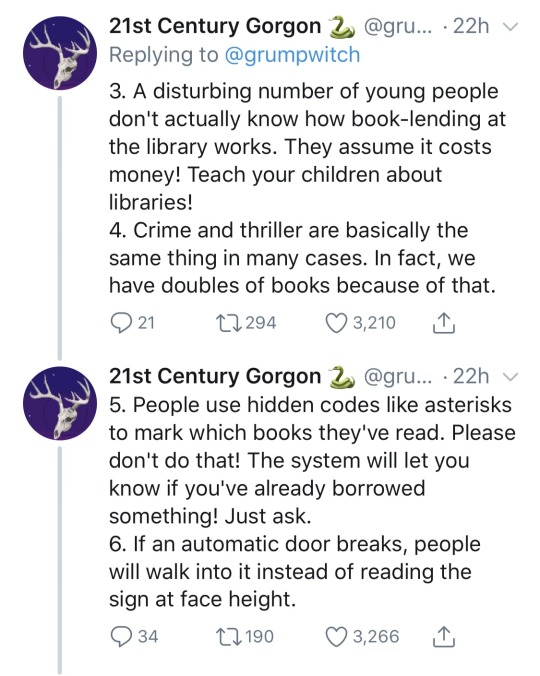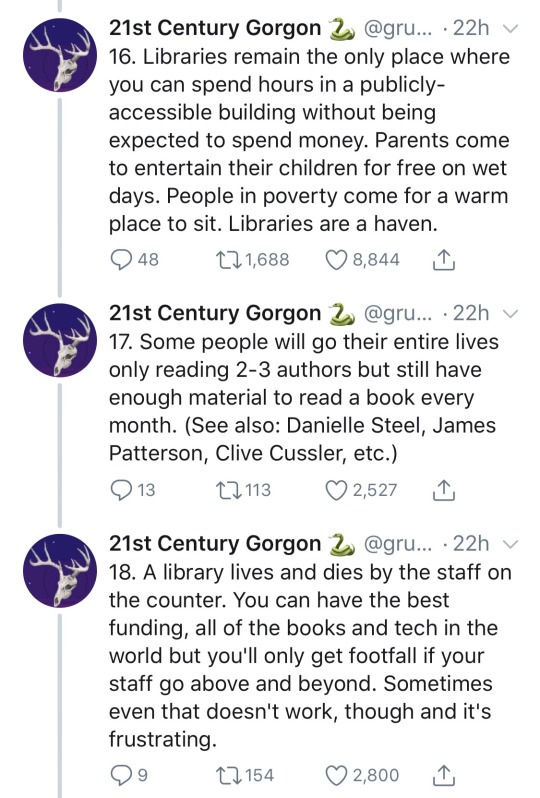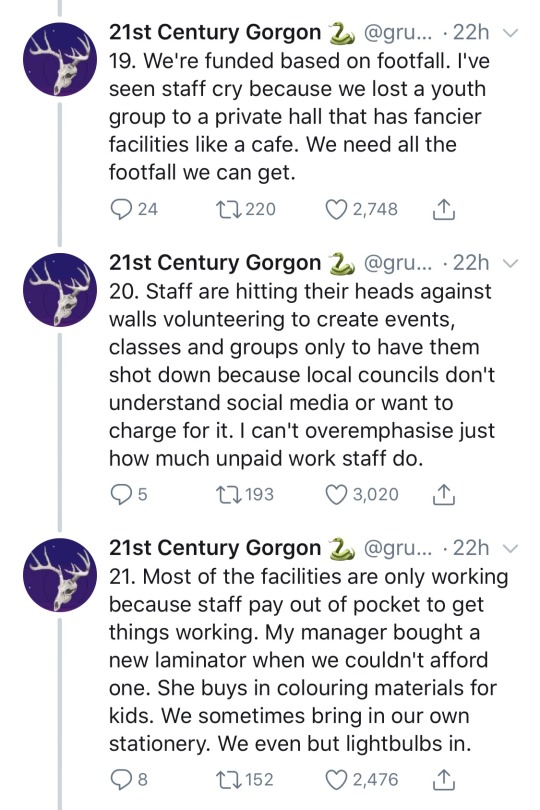Photo

Y’all r wildin OUT
423K notes
·
View notes
Text
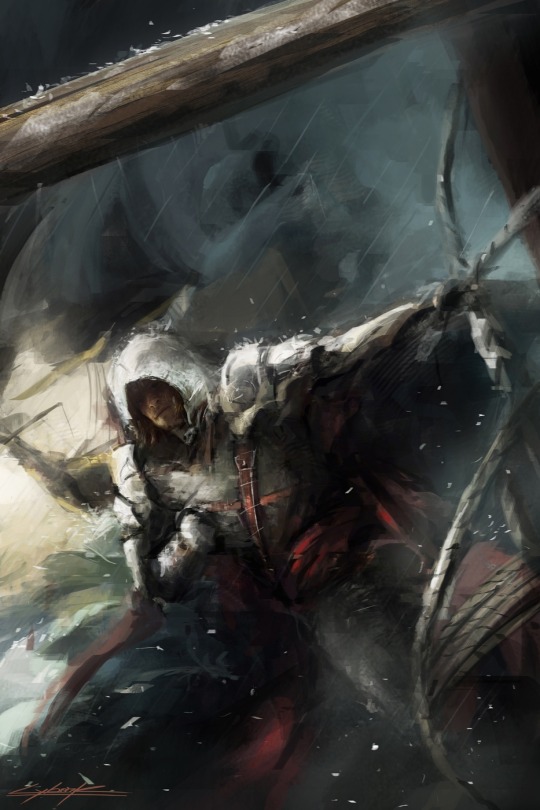
"assassins creed 4"
Artwork by VitoSs
91 notes
·
View notes
Text
“Don’t waste your time with explanations: people only hear what they want to hear.”
— Paulo Coelho
#Paulo Coelho#quotes#literature#writing#words#life quotes#very very true#this is why trying to hold any sort of engaging debate on the internet is a fruitless endeavour#except some fandom debates#but moral or societal ones?#I'll steer well clear of them
1K notes
·
View notes
Text
URGENT: 🚨🚨EARN IT ACT IS BACK IN THE SENATE 🚨🚨
tumblr's nsfw ban hitting the entire internet this spring 2022
February 1, 2022
I’m so so sorry for the long post but please please please pay attention and spread this
WHAT IS THE EARN IT ACT?
The EARN IT Act has been roundly condemned by nearly every major LGBTQ+ advocacy and human rights organization in the country. This is a bill that will make children less safe, undermine online safety and security, and trample free expression, because it carves out another exception to Section 230 of the Communications Decency Act (CDA 230), which the ACLU describes as “foundational to modern online communications.” This has been the law that has let the internet grow into what it is today, we’ve had this law since the 90s. (For context, Trump wanted to get rid of this law because he knew it would lead to mass govt surveillance and censorship of minorities online.)
The EARN IT Act will lead to online censorship. Platforms will be incentivized to scan their users’ communications and censor all sex-related content, including sex education, literally anything lgbt, transgender or non-binary education and support systems, and sex worker communication according to the ACLU. All this in the name of “protecting kids” and “fighting CSEM”, both of which the bill does nothing of the sort. In fact it makes fighting CSEM even harder.
If this bill passes, we're going to see most, if not all, adult content and accounts removed from mainstream platforms, for fear of the liability that could come with ever accidentally hosting CSAM, as well as the erasure of end-to-end encryption on messaging platforms.
This is really not a drill. Anyone who makes or consume anything “adult” online has to be prepared to fight Sen. Blumenthal's EARN IT Act, brought back from the grave by a bipartisan consensus to destroy Section 230.
EARN IT will open the way for politicians to define the category of “pornography" as they — or the lobbies that fund them — please, (Right now, right wing organizers are catgorizing books about racism as ‘porn’ to ban them from schools) which is a cherished goal of organizations that seek to reintroduce obscenity prosecutions for content now protected by Free Speech jurisprudence. This will 1000000% be used to eradicate anything LGBT online.
What this bill says it does on the surface is make platforms liable for their users’ activity if that activity involves sex and minors. However, because of 230, platforms are not liable at all about their users' activity. This has allowed platforms to grow and thrive and many niches online to as well. The bill also creates an unelected commission to create “best practices” to combat online child sexual exploitation. While these recommendations are nominally voluntary (so Americans have no decision on who gets to be on it), platforms that refuse to comply will be liable for criminal prosecutions and lawsuits should the government decide any of their users is engaging in online child sexual exploitation.
This is already a nightmare enough. But the bill also DESTROYS ENCRYPTION, you know, the thing protecting literally anyone or any govt entity from going into your private messages and emails and anything on your devices and spying on you.
This bill is going to finish what FOSTA/SESTA started. And that should terrify you.
Senator Blumenthal (Same guy who said ‘Facebook should ban finsta’) pushed this bill all of 2020, literally every activist (There were more than half a million signatures on this site opposing this act!) pushed hard to stop this bill. Now he brings it back, doesn’t show the text of the bill until hours later, and it’s WORSE. Instead of fixing literally anything in the bill that might actually protect kids online, Bluemnthal is hoping to fast track this and shove it through, hoping to get little media attention other than propaganda of "protecting kids" to support this shitty legislation that will harm kids.
The entire EARN IT act is based on *multiple* misunderstandings of the law and reality. It's a really really really bad policy that will do serious harm. But because Senator Blumenthal wants headlines, he'll pretend that it "helps protect the children." It won't. It'll do real damage. It will make CSEM much much worse.
One of the many reasons this bill is so dangerous: It totally misunderstands how Section 230 works, and in doing so (as with FOSTA) it is likely to make the very real problem of CSAM worse, not better. Section 230 gives companies the flexibility to try different approaches to dealing with various content moderation challenges. It allows for greater and greater experimentation and adjustments as they learn what works -- without fear of liability for any "failure." Removing Section 230 protections does the opposite. It says if you do anything, you may face crippling legal liability. This actually makes companies less willing to do anything that involves trying to seek out, take down, and report CSAM because of the greatly increased liability that comes with admitting that there is CSAM on your platform to search for and deal with. This liability would allow anyone for any reason to sue any platform they want, suing smaller ones out of existence. Look at what is happening right now with book bans across the nation with far right groups. This is going to happen to the internet if this bill passes.
(Remember, the state department released a report in December 2021 recommending that the government crack down on "obscenity" as hard the Reagan Administration did. If this bill passes, it could easily go way beyond shit red states are currently trying. It is a goldmine for the fascist right that is currently in the middle of banning every book that talks about race and sexuality across the US.)
NCOSE, the far right anti-LGBT hate group behind the global anti-sex legislations, is pushing the idea that any form of sexual expression, including talking about HEALTH, leads to sex trafficking. Their goal is to eliminate all sex, anything gay, and everything that goes against their idea of ‘God’ from the internet and hyper disney-fy and sanitize it. This is a highly coordinated attack on multiple fronts.
The reason these bills keep showing up is because there is this false lie spread by organizations like NCOSE that platforms do nothing about CSEM online. However, platforms are already liable for child sexual exploitation under federal law. Tech companies sent more than 45 million+ instances of CSAM to the DOJ in 2019 alone, most of which they declined to investigate. This shows that platforms are actually doing everything in their power already to stop CSEM by following already existing laws. The Earn It Act includes zero resources for proven investigation or prevention programs. If Senator Bluementhal actually cared about protecting youth, why wouldn’t he include anything to actually protect them in his shitty horrible bill?
The Center for Democracy & Technology (CDT) along with a coalition of 26 civil society organizations urged the United States Senate to reject the EARN IT Act. Groups on the left and right, including the ACLU, Fight for the Future, EFF, and Hacking // Hustling oppose it. Because it threatens free expression online and will threaten marginalized people’s safety while being totally unnecessary and failing to fix the problem it claims to address. The EARN IT Act empowers states to give law enforcement access to users’ private conversations and force companies to create encryption backdoors for law enforcement. This is totally unnecessary. Platforms are already handing over CSAM to the federal government. It’s actually likely to make prosecuting child molesters more difficult since evidence collected this way likely violates the Fourth Amendment and would be inadmissible in court.
I don't know why so many Senators are eager to cosponsor the "make child pornography worse" bill, but here we are.
WHAT YOU CAN DO:
EARN IT Act was introduced yesterday! And it’s already scheduled to get marked up, which is the first step post-introduction. Most bills never go to markup, so this means they are putting pressure to move this through. IF YOU LIVE IN THESE STATES (IL, VT, CA, RI, MN, DE, CT, HI, NJ, and GA), CONTACT YOUR SENATOR AND HOUSE MEMBERS NOW. THIS IS URGENT. This is who gets first crack, and folks in all have Senators who are on the Judiciary committee.
I'm guessing this month or March is when the bill would be passed if there is no opposition 😭 The bill was re-introduced yesterday, already set for markup this Thursday. This feels like an attempt to fast track it this month. Additionally the current makeup of Congress favors those who want it passed. Back in 2020 it was mostly Senate republicans and democrats who are basically republicans (just like now, check the sponsors) pushing it with Ron Wyden using the filibuster to stop their efforts. The house dems didn't want to give Trump a win and needed to appear as pro-privacy/free speech for the 2020 election. Now the dems have the presidency, both chambers of Congress and if you've noticed have spent a few years repeatedly demanding social media censorship and desperately want to give Biden victories. biden isn't like obama who opposed sopa/pipa to appeal to younger voters. This is similar to how FOSTA passed with the group who made it happen last time back again. Far as I'm aware Wyden hasn't spoken about new earn it yet but even if he does oppose it, it's very possible there will be enough Senate democrats to join the republicans in passing it beating a filibuster. Then pelosi's band of house idiots pass it and we have to choose between breaking the law because they can't stop us from using encryption or being obedient sheep to a group who consider themselves above laws.
It already has a fifth of the Senate cosponsoring it. There is a very very very real chance this bill becomes law. This is an uphill battle that's going to happen fast and quick. PLEASE, FIGHT NOW.
202-224-3121 connects you to the congressional hotline.
This website takes you to your Senator / House members contact info. EMAIL, MESSAGE, SEND LETTERS, CALL CALL CALL CALL CALL. Calling is the BEST way to get a message through. Get your family and friends to send calls too. This is literally the end of free speech online.
More sources to read about this bill:
https://cathyreisenwitz.substack.com/p/the-earn-it-act-is-anti-evidence
Fight for the Future’s Statement
https://www.youtube.com/watch?v=678EW8v09z8&t=1s
https://www.techdirt.com/articles/20220131/22423648395/senates-new-earn-it-bill-will-make-child-exploitation-problem-worse-not-better-still-attacks-encryption.shtml
EARN IT Act treats Myths as Facts.
https://surviveearnit.com/what-is-the-earn-it-act/ From 2020, but little has changed about the bill.
https://www.protocol.com/bulletins/earn-it-act-back
Center for Democracy and Technology’s Statement
TLDR: The EARN IT Act will lead to online censorship of any and all adult & lgbt content across the entire internet, open the floodgates to mass surveillance the likes which we haven't seen before, lead to much more CSEM being distributed online, and destroy encryption. Call 202-224-3121 to connect to your house and senate representative and tell them to VOTE NO on this bill that does not protect anyone and harms everyone.
62K notes
·
View notes
Text
"Shay turned his back on his mentor/the brotherhood."
"Shay is racist."
"Shay is evil."
I'll take "didn't pay attention to the game/didn't even play said game" for $500, Alex.
69 notes
·
View notes
Text

Haytham: 🤬how many times have I told you to find a convenient route!
Connor: 😒wouldn't it be better for you to ask your men to tear down these fences, father!
(🤣It's hard for me not to laugh when I created this one, really!)
608 notes
·
View notes
Photo






Cover and rearranged illustrations for Shaytham modern AU Expert free doujinshi. May be available at Beijing Slash Only 11.
Shay is a sniper of the Rooks and an undercover of New Scotland Yard while Haytham is his superior.
Liam is a tipster selling information between gangs and police.
Hope was Shay’s colleague in the Rooks now aiming to assassinate Haytham.
#Assassin's Creed#assassin's creed rogue#Shay Cormac#shay patrick cormac#haytham kenway#liam o'brien#fanart#fancomic#codex expert
318 notes
·
View notes
Photo





Still busy with duty work and couldn’t focus on my comic story so I made these instead during my spare time.
2017/10/10 edit: Found a way to access Tumblr on PC so I added Connor here!
#assassin's creed#assassin's creed rogue#assassin's creed unity#assassin's creed brotherhood#assassin's creed origins#shay cormac#shay patrick cormac#ezio auditore#arno dorian#Bayek#fanart#connor kenway#ratonhnhaké:ton
3K notes
·
View notes
Text
Theory: Shay’s escape route from Lisbon
When I was preparing my new comic I got this map of Lisbon before 1755, from the book This Gulf of Fire: The Destruction of Lisbon, or Apocalypse in the Age of Science and Reason by Mark Molesky.
We can’t check Lisbon map in the game, but is Shay’s escape route just random, or in an accurate map like this? It made me so curious.

A lot of images and a video contained in this post, note before you -
Keep reading
#assassin's creed#assassin's creed rogue#Shay Cormac#Shay Patrick Cormac#fanvid#screenshots#chat#lisbon
302 notes
·
View notes
Text
Equilibrium
中文版
Will depart for Russia tomorrow so I made this comic in a rush.
Long ago I found that when Shay stands on the edge of the ice, Liam will stop attacking and step back to the other end. So I guess he knows the ice will collapse and he doesn’t want that to happen, he doesn’t want Shay to die, of course he doesn’t want himself to die either. After all they are like blood brothers. So I made this to admire Liam.

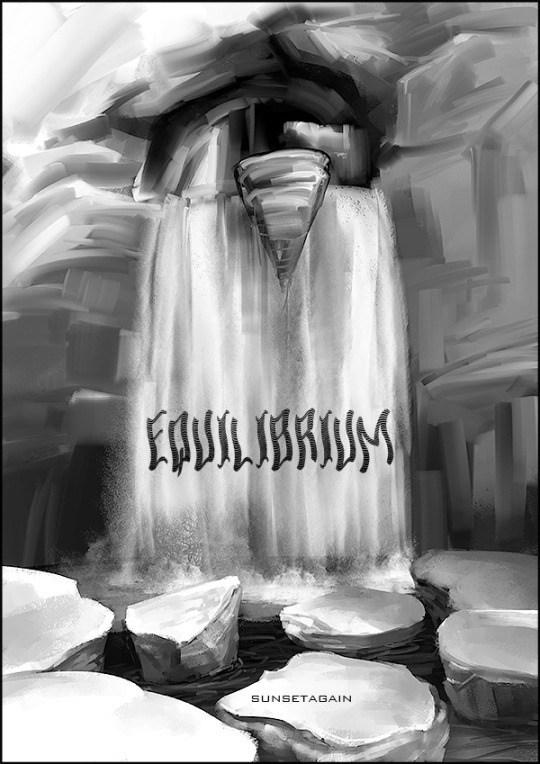




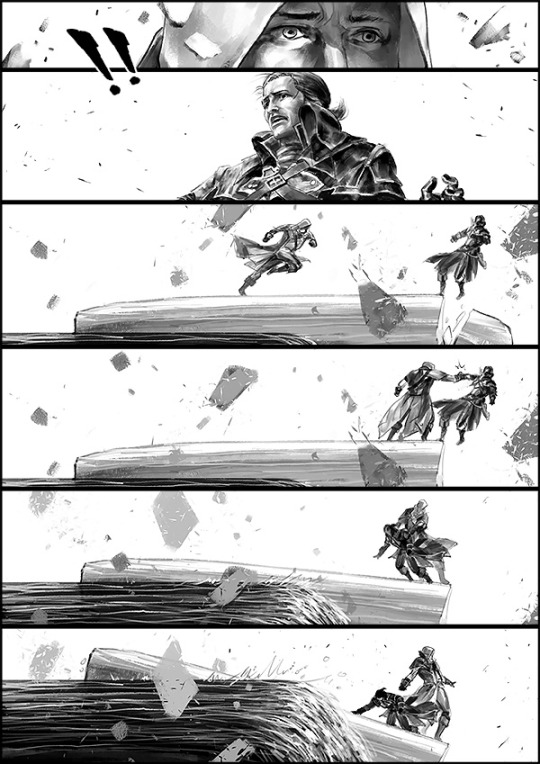





530 notes
·
View notes
Photo




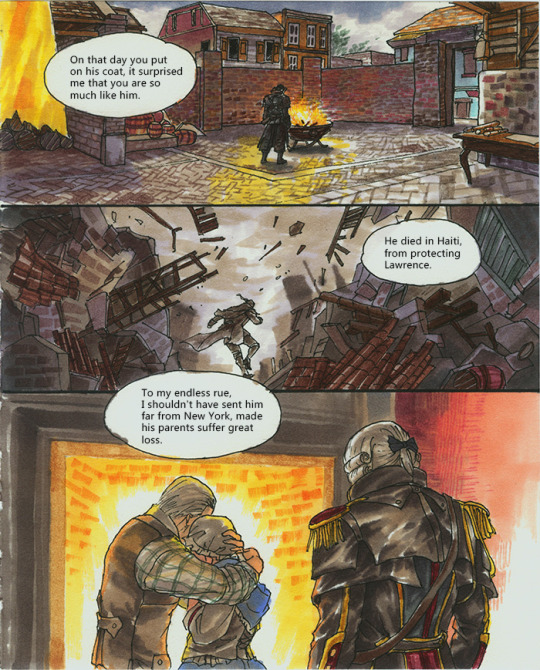
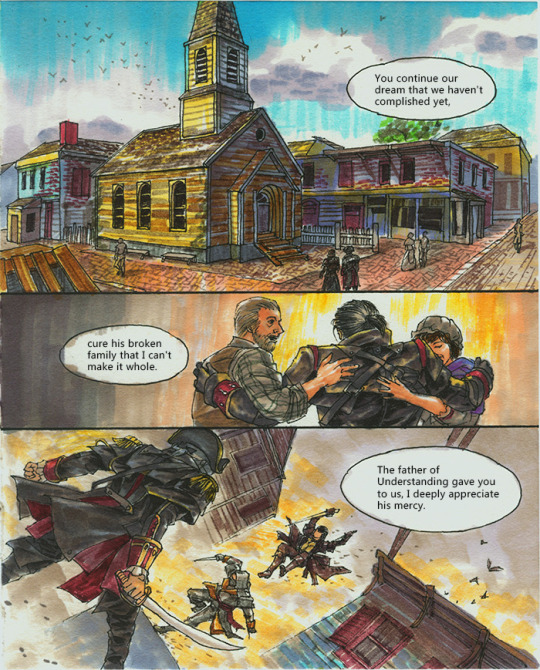


中文版
New year new ship: Shay & Monro
I’ll never tell I drew this shit just because I want to take a sneak peek at Shay sleeping in his lovely pink quilt. ^q^
Done with mark pens on sketchbook.
#Assassin's Creed#assassin's creed rogue#shay patrick cormac#Shay Cormac#george monro#christopher gist#Barry Finnegan#Cassidy Finnegan#fancomic
508 notes
·
View notes
Link
✠ AC Rogue is 5 years old! Still the best in my heart ✠
To celebrate I rearranged my fan comics about Shay chronologically in the PDF above (378 pages). Contents differing from canon were made before official timeline updated.
中文版
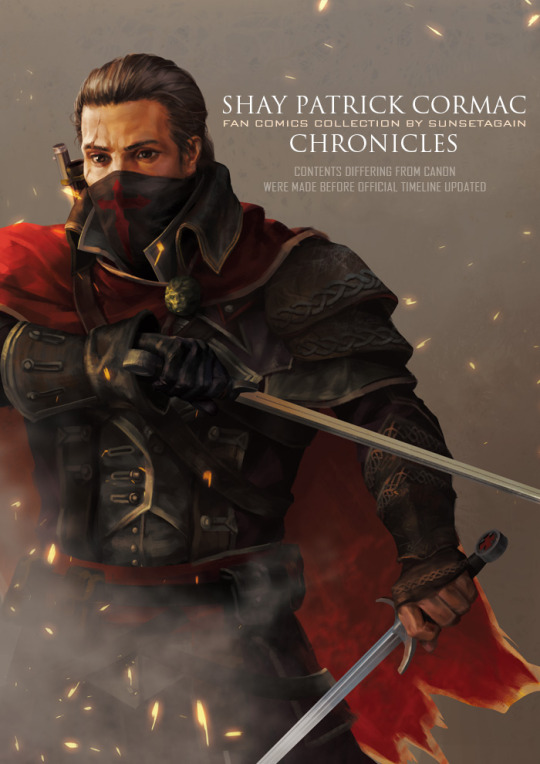
325 notes
·
View notes
Text
POST PLUS PROTEST PHASE 2 : 48 Hour Edition
Here we are back again for a 48 hour log off protest of the current version of Post+.
WHEN?
October 2, 2021
12 am Eastern Daylight Time/Atlantic Standard Time
1 am Chile Standard Time/Brazil Time/Argentina Time
4 am UTC
5 am BST/London/West Africa Time/West European Summer Time
6 am Central Europe Time/Central Africa Time
7 am Moscow Standard Time/East Africa Time/Eastern European Summer Time/Arabian Standard Time
8 am Gulf Standard Time
9:30 am Indian Standard Time
11 am Indochina Time
12 pm (Noon) Hong Kong Time/Australian Western Standard Time
1 pm Japan Standard Time/Korean Standard Time
1:30 pm Australian Central Time
2 pm Australian Eastern Standard Time
5 pm New Zealand Daylight Time
October 1, 2021
11 pm Central Time
10 pm Mountain Time
9 pm Pacific Time
8 Alaska Daylight Time
6 pm Hawaii Standard Time
If you don’t see your time zone, or unsure which to use, click HERE for the checker!
We’ll be running countdown posts leading up to the main event!
We’re logging off for 48 hours! So, for example, if you log out on October 2, 2021 at 1pm JST you’ll log back on October 4, 2021 at 1 pm JST!
Also! Our Australian friends, take note that daylight savings/summer time ends in certain territories on October 3rd!
WHY?
Exhibits A, B, C, D, E, F, G
Tumblr recently announced a new feature called Post+ meant to help content creators make money while keeping a cut to help maintain the site. Not a bad idea, right?
The problem is that tumblr actively encouraged the use of Post+ in conjunction with fan works. Which is, despite the way they continue to side step it, highly illegal. Not enough people are aware of that fact.
Our mission is to force tumblr to either rebrand the Post+ feature as something for original content ONLY and/or offer a means to help the site survive outside of monetizing fan work. We want the see tumblr thrive but Post+ has the potential for ruining everything. Give us a better option, @staff ! In fact, HERE are some options!
WHAT ELSE CAN I DO?
Optional avatar and banner to use!

[Image description : a square shaped color gradient image going from purple to blue to cyan to green. A large red prohibition sign overlaid on the words tumblr post+. /End image description]

[Image Description : a tumblr header color gradient image going from purple to blue to cyan to green. On the left side is a red prohibition sign overlaid on the words tumblr Post+. Underneath is the words log off protest in bold letters. On the right side is the words I am logging off for 48 hours. /End image description]
Banner credit to @adairctedgibbgirl ! Thank you!
If the banner doesn’t size correctly, this this post HERE!
You can also spread the word on ALL social media (Twitter/TikTok/Facebook/Reddit etc) and reblog this post. You can also look at this post HERE for more ideas. Another option, if you’re using the mobile app, is to leave an honest review (be polite, be concise, don’t spam) on the App Store of your choice! The best and easiest way to protest is DON’T USE POST+!
WILL THIS WORK?
We got tumblr to temporarily hide the original Post+ posts and possibly made wip a thing. So who knows?
ANYTHING ELSE?
Keep checking @postplus-protest for updates and further info, especially updates to this post! Thank you, all of you, for participating or boosting!
Remember to reblog, use the hashtags #postplusprotest and #tumblrlogoff2021, and SPREAD THE WORD TO OTHER SOCIAL MEDIA!
9K notes
·
View notes
Text
Fantasy Guide to Architecture



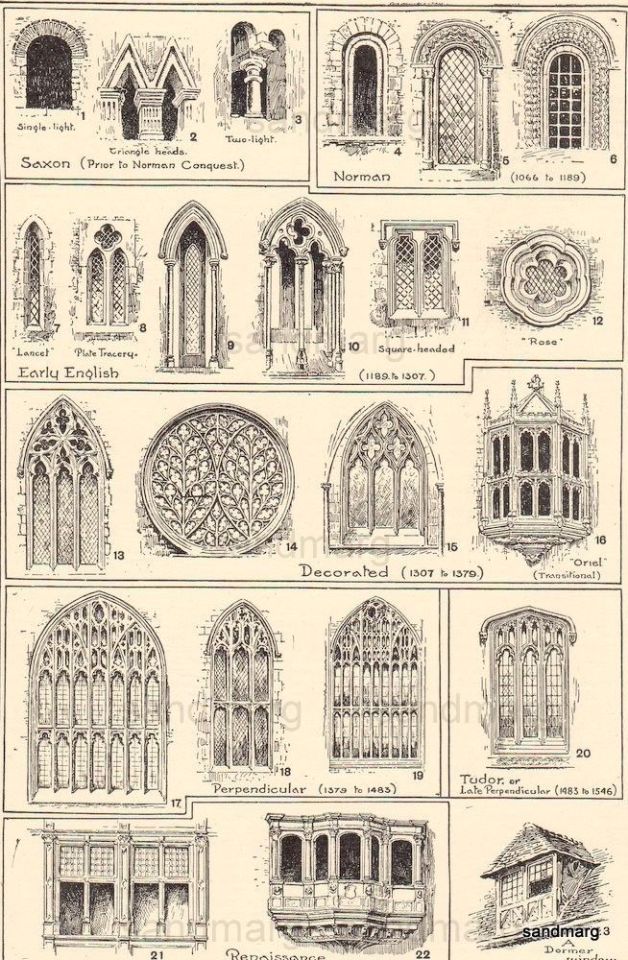


This post has been waiting on the back burner for weeks and during this time of quarantine, I have decided to tackle it. This is probably the longest post I have ever done. I is very tired and hope that I have covered everything from Ancient times to the 19th Century, that will help you guys with your worldbuilding.
Materials
What you build with can be determined by the project you intend, the terrain you build on and the availability of the material. It is one characteristic that we writers can take some some liberties with.
Granite: Granite is an stone formed of Igneous activity near a fissure of the earth or a volcano. Granites come in a wide range of colour, most commonly white, pink, or grey depending on the minerals present. Granite is hard and a durable material to build with. It can be built with without being smoothed but it looks bitchin' and shiny all polished up.
Marble: Probably everyone's go to materials for building grand palaces and temples. Marble is formed when great pressure is placed on limestone. Marble can be easily damaged over time by rain as the calcium in the rock dissolves with the chemicals found in rain. Marble comes in blue, white, green, black, white, red, gray and yellow. Marble is an expensive material to build with, highly sought after for the most important buildings. Marble is easy to carve and shape and polishes to a high gleam. Marble is found at converging plate boundaries.
Obsidian: Obsidian is probably one of the most popular stones mentioned in fantasy works. Obsidian is an igneous rock formed of lava cooling quickly on the earth's surfaces. Obsidian is a very brittle and shiny stone, easy to polish but not quite a good building material but a decorative one.
Limestone: Limestone is made of fragments of marine fossils. Limestone is one of the oldest building materials. Limestone is an easy material to shape but it is easily eroded by rain which leads most limestone monuments looking weathered.
Concrete: Concrete has been around since the Romans. Concrete is formed when aggregate (crushed limstone, gravel or granite mixed with fine dust and sand) is mixed with water. Concrete can be poured into the desired shape making it a cheap and easy building material.
Brick: Brick was one of history's most expensive materials because they took so long to make. Bricks were formed of clay, soil, sand, and lime or concrete and joined together with mortar. The facade of Hampton Court Palace is all of red brick, a statement of wealth in the times.
Glass: Glass is formed of sand heated until it hardens. Glass is an expensive material and for many years, glass could not be found in most buildings as having glass made was very expensive.
Plaster: Plaster is made from gypsum and lime mixed with water. It was used for decoration purposes and to seal walls. A little known fact, children. Castle walls were likely painted with plaster or white render on the interior.
Wattle and Daub: Wattle and daub is a building material formed of woven sticks cemented with a mixture of mud, one of the most common and popular materials throughout time.
Building terms
Arcade: An arcade is a row of arches, supported by columns.
Arch: An arch is a curved feature built to support weight often used for a window or doorway.
Mosaic: Mosaics are a design element that involves using pieces of coloured glass and fitted them together upon the floor or wall to form images.
Frescos: A design element of painting images upon wet plaster.
Buttress: A structure built to reinforce and support a wall.
Column: A column is a pillar of stone or wood built to support a ceiling. We will see more of columns later on.
Eave: Eaves are the edges of overhanging roofs built to allow eater to run off.
Vaulted Ceiling: The vaulted ceilings is a self-supporting arched ceiling, than spans over a chamber or a corridor.
Colonnade: A colonnade is a row of columns joined the entablature.
Entablature: a succession of bands laying atop the tops of columns.
Bay Window: The Bay Window is a window projecting outward from a building.
Courtyard/ Atrium/ Court: The courtyard is an open area surrounded by buildings on all sides
Dome: The dome resembles a hollow half of a sphere set atop walls as a ceiling.
Façade: the exterior side of a building
Gable: The gable is a triangular part of a roof when two intersecting roof slabs meet in the middle.
Hyphen: The hyphen is a smaller building connecting between two larger structures.
Now, let's look at some historical building styles and their characteristics of each Architectural movement.
Classical Style
The classical style of Architecture cannot be grouped into just one period. We have five: Doric (Greek), Ionic (Greek), Corinthian (Greek), Tuscan (Roman) and Composite (Mixed).
Doric: Doric is the oldest of the orders and some argue it is the simplest. The columns of this style are set close together, without bases and carved with concave curves called flutes. The capitals (the top of the column) are plain often built with a curve at the base called an echinus and are topped by a square at the apex called an abacus. The entablature is marked by frieze of vertical channels/triglyphs. In between the channels would be detail of carved marble. The Parthenon in Athens is your best example of Doric architecture.
Ionic: The Ionic style was used for smaller buildings and the interiors. The columns had twin volutes, scroll-like designs on its capital. Between these scrolls, there was a carved curve known as an egg and in this style the entablature is much narrower and the frieze is thick with carvings. The example of Ionic Architecture is the Temple to Athena Nike at the Athens Acropolis.
Corinthian: The Corinthian style has some similarities with the Ionic order, the bases, entablature and columns almost the same but the capital is more ornate its base, column, and entablature, but its capital is far more ornate, commonly carved with depictions of acanthus leaves. The style was more slender than the others on this list, used less for bearing weight but more for decoration. Corinthian style can be found along the top levels of the Colosseum in Rome.
Tuscan: The Tuscan order shares much with the Doric order, but the columns are un-fluted and smooth. The entablature is far simpler, formed without triglyphs or guttae. The columns are capped with round capitals.
Composite: This style is mixed. It features the volutes of the Ionic order and the capitals of the Corinthian order. The volutes are larger in these columns and often more ornate. The column's capital is rather plain. for the capital, with no consistent differences to that above or below the capital.
Islamic Architecture
Islamic architecture is the blanket term for the architectural styles of the buildings most associated with the eponymous faith. The style covers early Islamic times to the present day. Islamic Architecture has some influences from Mesopotamian, Roman, Byzantine, China and the Mongols.
Paradise garden: As gardens are an important symbol in Islam, they are very popular in most Islamic-style buildings. The paradise gardens are commonly symmetrical and often enclosed within walls. The most common style of garden is split into four rectangular with a pond or water feature at the very heart. Paradise gardens commonly have canals, fountains, ponds, pools and fruit trees as the presence of water and scent is essential to a paradise garden.
Sehan: The Sehan is a traditional courtyard. When built at a residence or any place not considered to be a religious site, the sehan is a private courtyard. The sehan will be full of flowering plants, water features snd likely surrounded by walls. The space offers shade, water and protection from summer heat. It was also an area where women might cast off their hijabs as the sehan was considered a private area and the hijab was not required. A sehan is also the term for a courtyard of a mosque. These courtyards would be surrounded by buildings on all sides, yet have no ceiling, leaving it open to the air. Sehans will feature a cleansing pool at the centre, set under a howz, a pavilion to protect the water. The courtyard is used for rituals but also a place of rest and gathering.
Hypostyle Hall: The Hypostyle is a hall, open to the sky and supported by columns leading to a reception hall off the main hall to the right.
Muqarnas : Muqarnas is a type of ornamentation within a dome or a half domed, sometimes called a "honeycomb", or "stalactite" vaulted ceiling. This would be cast from stone, wood, brick or stucco, used to ornament the inside of a dome or cupola. Muqarnas are used to create transitions between spaces, offering a buffer between the spaces.
African Architecture
African Architecture is a very mixed bag and more structurally different and impressive than Hollywood would have you believe. Far beyond the common depictions of primitive buildings, the African nations were among the giants of their time in architecture, no style quite the same as the last but just as breathtaking.
Somali architecture: The Somali were probably had one of Africa's most diverse and impressive architectural styles. Somali Architecture relies heavy on masonry, carving stone to shape the numerous forts, temples, mosques, royal residences, aqueducts and towers. Islamic architecture was the main inspiration for some of the details of the buildings. The Somali used sun-dried bricks, limestone and many other materials to form their impressive buildings, for example the burial monuments called taalo
Ashanti Architecture: The Ashanti style can be found in present day Ghana. The style incorporates walls of plaster formed of mud and designed with bright paint and buildings with a courtyard at the heart, not unlike another examples on this post. The Ashanti also formed their buildings of the favourite method of wattle and daub.
Afrikaner Architecture: This is probably one of the oddest architectural styles to see. Inspired by Dutch settlers (squatters), the buildings of the colony (planters/squatters) of South Africa took on a distinctive Dutch look but with an Afrikaner twist to it making it seem both familiar and strange at the same time.
Rwandan Architecture: The Rwandans commonly built of hardened clay with thatched roofs of dried grass or reeds. Mats of woven reeds carpeted the floors of royal abodes. These residences folded about a large public area known as a karubanda and were often so large that they became almost like a maze, connecting different chambers/huts of all kinds of uses be they residential or for other purposes.
Aksumite Architecture: The Aksumite was an Empire in modern day Ethiopia. The Aksumites created buildings from stone, hewn into place. One only has to look at the example of Bete Medhane Alem to see how imposing it was.
Yoruba Architecture: Yoruba Architecture was made by earth cured until it hardened enough to form into walls, or they used wattle and daub, roofed by timbers slats coated in woven grass or leaves. Each unit divided up parts of the buildings from facilities to residences, all with multiple entrances, connected together.
Igbo Architecture: The Igbo style follows some patterns of the Yoruba architecture, excepting that there are no connected walls and the spacing is not so equal. The closer a unit was to the centre, the more important inhabitants were.
Hausa architecture: Hausa Architecture was formed of monolithic walls coated in plaster. The ceilings and roof of the buildings were in the shape of small domes and early vaulted ceilings of stripped timber and laterite. Hausa Architecture features a single entrance into the building and circular walls.
Nubian Architecture: Nubia, in modern day Ethiopia, was home to the Nubians who were one of the world's most impressive architects at the beginning of the architecture world and probably would be more talked about if it weren't for the Egyptians building monuments only up the road. The Nubians were famous for building the speos, tall tower-like spires carved of stone. The Nubians used a variety of materials and skills to build, for example wattle and daub and mudbrick. The Kingdom of Kush, the people who took over the Nubian Empire was a fan of Egyptian works even if they didn't like them very much. The Kushites began building pyramid-like structures such at the sight of Gebel Barkal
Egyptian Architecture: The Egyptians were the winners of most impressive buildings for s good while. Due to the fact that Egypt was short on wood, Ancient Egyptians returned to building with limestone, granite, mudbrick, sandstone which were commonly painted with bright murals of the gods along with some helpful directions to Anubis's crib. The Egyptians are of course famous for their pyramids but lets not just sit on that bandwagon. Egyptian Architecture sported all kinds of features such as columns, piers, obelisks and carving buildings out of cliff faces as we see at Karnak. The Egyptians are cool because they mapped out their buildings in such a way to adhere to astrological movements meaning on special days if the calendar the temple or monuments were in the right place always. The Egyptians also only build residences on the east bank of the Nile River, for the opposite bank was meant for the dead. The columns of Egyptian where thicker, more bulbous and often had capitals shaped like bundles of papyrus reeds.
Chinese Architecture
Chinese Architecture is probably one of the most recognisable styles in the world. The grandness of Chinese Architecture is imposing and beautiful, as classical today as it was hundreds of years ago.
The Presence of Wood: As China is in an area where earthquakes are common, most of the buildings are were build of wood as it was easy to come across and important as the Ancient Chinese wanted a connection to nature in their homes.
Overhanging Roofs: The most famous feature of the Chinese Architectural style are the tiled roofs, set with wide eaves and upturned corners. The roofs were always tiled with ceramic to protect wood from rotting. The eaves often overhung from the building providing shade.
Symmetrical Layouts: Chinese Architecture is symmetrical. Almost every feature is in perfect balance with its other half.
Fengshui: Fengshui are philosophical principles of how to layout buildings and towns according to harmony lain out in Taoism. This ensured that the occupants in the home where kept in health, happiness, wealth and luck.
One-story: As China is troubled by earthquakes and wood is not a great material for building multi-storied buildings, most Chinese buildings only rise a single floor. Richer families might afford a second floor but the single stories compounds were the norm.
Orientation: The Ancient Chinese believed that the North Star marked out Heaven. So when building their homes and palaces, the northern section was the most important part of the house and housed the heads of the household.
Courtyards: The courtyard was the most important area for the family within the home. The courtyard or siheyuan are often built open to the sky, surrounded by verandas on each side.
Japanese Architecture
Japanese Architecture is famous for its delicacy, smooth beauty and simplistic opulence. Japanese Architecture has been one of the world's most recognisable styles, spanning thousands of years.
Wood as a Common Material: As with the Chinese, the most popular material used by the Japanese is wood. Stone and other materials were not often used because of the presence of earthquakes. Unlike Chinese Architecture, the Japanese did not paint the wood, instead leaving it bare so show the grain.
Screens and sliding doors: The shoji and fusuma are the screens and sliding doors are used in Japanese buildings to divide chambers within the house. The screens were made of light wood and thin parchment, allowing light through the house. The screens and sliding doors were heavier when they where used to shutter off outside features.
Tatami: Tatami mats are used within Japanese households to blanket the floors. They were made of rice straw and rush straw, laid down to cushion the floor.
Verandas: It is a common feature in older Japanese buildings to see a veranda along the outside of the house. Sometimes called an engawa, it acted as an outdoor corridor, often used for resting in.
Genkan: The Genkan was a sunken space between the front door and the rest of the house. This area is meant to separate the home from the outside and is where shoes are discarded before entering.
Nature: As both the Shinto and Buddhist beliefs are great influences upon architecture, there is a strong presence of nature with the architecture. Wood is used for this reason and natural light is prevalent with in the home. The orientation is meant to reflect the best view of the world.
Indian Architecture
India is an architectural goldmine. There are dozens of styles of architecture in the country, some spanning back thousands of years, influenced by other cultures making a heady stew of different styles all as beautiful and striking as the last.
Mughal Architecture: The Mughal architecture blends influences from Islamic, Persian along with native Indian. It was popular between the 16th century -18th century when India was ruled by Mughal Emperors. The Taj Mahal is the best example of this.
Indo-Saracenic Revival Architecture: Indo Saracenic Revival mixes classical Indian architecture, Indo-Islamic architecture, neo-classical and Gothic revival of the 1800s.
Cave Architecture: The cave architecture is probably one of the oldest and most impressive styles of Indian architecture. In third century BC, monks carved temples and buildings into the rock of caves.
Rock-Cut Architecture: The Rock-cut is similar to the cave style, only that the rock cut is carved from a single hunk of natural rock, shaped into buildings and sprawling temples, all carved and set with statues.
Vesara Architecture: Vesara style prevalent in medieval period in India. It is a mixture of the Dravida and the Nagara styles. The tiers of the Vesara style are shorter than the other styles.
Dravidian Architecture: The Dravidian is the southern temple architectural style. The Kovils are an example of prime Dravidian architecture. These monuments are of carved stone, set up in a step like towers like with statues of deities and other important figures adorning them.
Kalinga Architecture: The Kalinga style is the dominant style in the eastern Indian provinces. The Kalinga style is famous for architectural stipulations, iconography and connotations and heavy depictions of legends and myths.
Sikh Architecture: Sikh architecture is probably the most intricate and popular of the styles here. Sikh architecture is famous for its soft lines and details.
Romanesque (6th -11th century/12th)
Romanesque Architecture is a span between the end of Roman Empire to the Gothic style. Taking inspiration from the Roman and Byzantine Empires, the Romanesque period incorporates many of the styles.
Rounded arches: It is here that we see the last of the rounded arches famous in the classical Roman style until the Renaissance. The rounded arches are very popular in this period especially in churches and cathedrals. The rounded arches were often set alongside each other in continuous rows with columns in between.
Details: The most common details are carved floral and foliage symbols with the stonework of the Romanesque buildings. Cable mouldings or twisted rope-like carvings would have framed doorways.
Pillars: The Romanesque columns is commonly plainer than the classical columns, with ornate captials and plain bases. Most columns from this time are rather thick and plain.
Barrel Vaults: A barrel vaulted ceiling is formed when a curved ceiling or a pair of curves (in a pointed ceiling). The ceiling looks rather like half a tunnel, completely smooth and free of ribs, stone channels to strengthen the weight of the ceiling.
Arcading: An arcade is a row of arches in a continual row, supported by columns in a colonnade. Exterior arcades acted as a sheltered passage whilst inside arcades or blind arcades, are set against the wall the arches bricked, the columns and arches protruding from the wall.
Gothic Architecture (12th Century - 16th Century)
The Gothic Architectural style is probably one of the beautiful of the styles on this list and one of most recognisable. The Gothic style is a dramatic, opposing sight and one of the easiest to describe.
Pointed arch: The Gothic style incorporates pointed arches, in the windows and doorways. The arches were likely inspired by pre-Islamic architecture in the east.
Ribbed vault: The ribbed vault of the Gothic age was constructed of pointed arches. The trick with the ribbed vaulted ceiling, is that the pointed arches and channels to bear the weight of the ceiling.
Buttresses: The flying buttress is designed to support the walls. They are similar to arches and are connected to counter-supports fixed outside the walls.
Stained-Glass Window: This is probably one of the most recognisable and beautiful of the Gothic features. They can be set in round rose windows or in the pointed arches.
Renaissance Architecture (15th Century- 17th Century)
Renaissance architecture was inspired by Ancient Roman and Greek Architecture. Renaissance Architecture is Classical on steroids but has its own flare. The Renaissance was a time for colour and grandeur.
Columns and pilasters: Roman and Greek columns were probably the greatest remix of the Renaissance period. The architecture of this period incorporated the five orders of columns are used: Tuscan, Doric, Ionic, Corinthian and Composite. The columns were used to hold up a structure, support ceilings and adorn facades. Pilasters were columns within a chamber, lining the walls for pure decoration purposes.
Arches: Arches are rounded in this period, having a more natural semi-circular shape at its apex. Arches were a favourite feature of the style, used in windows, arcades or atop columns.
Cupola: Is a small dome-like tower atop a bigger dome or a rooftop meant to allow light and air into the chamber beneath.
Vaulted Ceiling/Barrel Vault: Renaissance vaulted ceilings do not have ribs. Instead they are semi-circular in shape, resting upon a square plain rather than the Gothic preference of rectangular. The barrel vault held by its own weight and would likely be coated in plaster and painted.
Domes: The dome is the architectural feature of the Renaissance. The ceiling curves inwards as it rises, forming a bowl like shape over the chamber below. The dome's revival can be attributed to Brunelleschi and the Herculean feat of placing a dome on the Basilica di Santa Maria del Fiore. The idea was later copied by Bramante who built St. Peter's Basilica.
Frescos: To decorate the insides of Renaissance buildings, frescos (the art of applying wet paint to plaster as it dries) were used to coat the walls and ceilings of the buildings. The finest frescos belong to Michelangelo in the Sistine Chapel.
Baroque (1625–1750)
Baroque incorporates some key features of Renaissance architecture, such as those nice columns and domes we saw earlier on. But Baroque takes that to the next level. Everything is higher, bigger, shinier, brighter and more opulent. Some key features of Baroque palaces and buildings would be:
Domes: These domes were a common feature, left over from the Renaissance period. Why throw out a perfectly good bubble roof, I ask you? But Baroque domes were of course, grander. Their interiors were were nearly always painted or gilded, so it drew the eye upwards which is basically the entire trick with Baroque buildings. Domes were not always round in this building style and Eastern European buildings in Poland and Ukraine for example sport pear-shaped domes.
Solomonic columns: Though the idea of columns have been about for years but the solomonic columns but their own twist on it. These columns spiral from beginning to end, often in a s-curved pattern.
Quadratura: Quadratura was the practice of painting the ceilings and walls of a Baroque building with trompe-l'oeil. Most real life versions of this depict angels and gods in the nude. Again this is to draw the eye up.
Mirrors: Mirrors came into popularity during this period as they were a cool way to create depth and light in a chamber. When windows faced the mirrors on the wall, it creates natural light and generally looks bitchin'. Your famous example is the Hall of Mirrors at the Palace of Versailles.
Grand stairways: The grand sweeping staircases became popular in this era, often acting as the centre piece in a hall. The Baroque staircase would be large and opulent, meant for ceremonies and to smoother guests in grandeur.
Cartouche: The cartouche is a design that is created to add some 3D effect to the wall, usually oval in shape with a convex surface and edged with scrollwork. It is used commonly to outline mirrors on the wall or crest doorways just to give a little extra opulence.
Neoclassical (1750s-19th century)
The Neoclassical Period involved grand buildings inspired by the Greek orders, the most popular being the Doric. The main features of Neoclassical architecture involve the simple geometric lines, columns, smooth walls, detailing and flat planed surfaces. The bas-reliefs of the Neoclassical style are smoother and set within tablets, panels and friezes. St. Petersburg is famous for the Neoclassical styles brought in under the reign of Catherine the Great.
Greek Revival (late 18th and early 19th century)
As travel to other nations became easier in this time period, they became to get really into the Ancient Greek aesthetic. During this architectural movement they brought back the gabled roof, the columns and the entablature. The Greek Revival was more prevalent in the US after the Civil War and in Northern Europe.
Hope this helps somewhat @marril96
27K notes
·
View notes
Text
Reblog if you:
have no intention of using Post+ to put your content behind a paywall,
and
have no intention to pay to unlock any content hidden by Post+ either
I wanna see something.
26K notes
·
View notes
Text
Researching for WIPs : A Collection

Patreon || Ko-Fi || Masterlist || Work In Progress
–
Historical Fiction
Resources For Writing (Global) Period Pieces : High Middle Ages & Renaissance
Resources For Writing (Global) Period Pieces : 1600s
Resources For Writing (Global) Period Pieces : 1700s
Resources For Writing (Global) Period Pieces : 1800s
Resources For Writing (Global) Period Pieces : 1900-1939
Resources For Writing (Global) Period Pieces : 1940-1969
Resources For Writing (Global) Period Pieces : 1970-1999
Resources For Writing Royalty
Procedural/Scientific
Resources For Crime/Mystery/Thriller Writers
Resources For Writing Dystopian/Post-Apocalyptic Stories
Resources For Writing Sketchy Topics
Resources For Writing The Mafia
Resources For Writing Injuries
By Genre
Resources For Fantasy/Mythology Writers
Resources For Writing Science Fiction
Resources For Romance Writers
Other
Resources For Plot Development
Resources For Describing Physical Things
Resources For Describing Characters
Resources For Creating Characters
Resources For Worldbuilding
Resources For Describing Emotion
–
Masterlist | WIP Blog
If you enjoy my blog and wish for it to continue being updated frequently and for me to continue putting my energy toward answering your questions, please consider Buying Me A Coffee, or pledging your support on Patreon, where I offer early access and exclusive benefits for only $5/month.
Shoutout to my $15+ patron, Douglas S.!
4K notes
·
View notes

